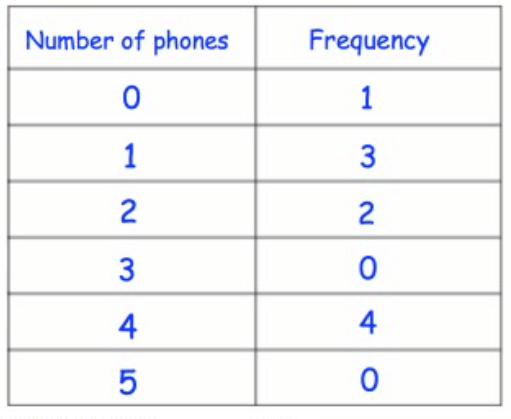Learn Math step-by-step
CALCULATING THE MEAN FROM A FREQUENCY TABLE
Work out the mean for each of these frequency tables, you may not use calculator.
Problem 1 :

Solution :
From the table, we understand that,
- at the age of 5 we have 2 people
- at the age of 6 we have 2 people
- at the age of 7 we have 5 people
- at the age of 8 we have 1 people
To find the total number of people, we will add 2, 2, 5 and 1.
Problem 2 :

Solution :
From the table, we understand that,
- 1 person is having no phone (0 phones)
- 3 persons is having 1phone.
- 2 persons is having 2 phones.
- No person is having 3 phones.
- 4 persons is having 4 phones.
- No person is having 5 phones.
Problem 3 :

Solution :
Problem 4 :

Solution :
Problem 5 :

Solution :
Recent Articles
-
Finding Range of Values Inequality Problems
May 21, 24 08:51 PM
Finding Range of Values Inequality Problems -
Solving Two Step Inequality Word Problems
May 21, 24 08:51 AM
Solving Two Step Inequality Word Problems -
Exponential Function Context and Data Modeling
May 20, 24 10:45 PM
Exponential Function Context and Data Modeling